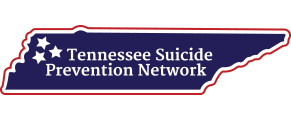No one experiences self-harm the same way as someone else. Understanding the signs, symptoms and side effects of self-harm is a key component toward starting the recovery journey.
Understanding Self-Harm
Learn about self-harm
Self-harm, often referred to as “cutting” even though self-harming behaviors can include a variety of methods of self-injury, is a number of actions and behaviors in which a person deliberately inflicts harm to themselves. While self-injury does involve harm— occasionally life-threatening harm— to oneself, this behavior is not intended to be a suicidal act. There are a great variety of reasons that an adolescent will self-injure and the mixture of emotions that triggers self-injury is complex. Teens and adolescents who engage in self-injury do so for a number of reasons, some of which may be hard for others to understand. These include:
- As a means of distracting from unpleasant emotions by inflicting physical pain on oneself
- As a means of communicating depression or other types of mental illness to the rest of the world
- Punishment for a perceived error, mistake, or fault
- As a way to achieve a needed sense of control over a teen’s body, emotions, or traumatic events
- As a way to express in an external way internal emotions and turmoil
- Reduce and manage intense anxiety or distress
- As a way to feel anything at all – even physical pain – if the teen feels empty inside
The burden of self-injury is often very heavy, as many teens who engage in self-injury do so in private, hiding their secret from family and friends. This burden can be tremendously hard to carry, and may in turn lead a teen to engage in more self-injury behaviors to escape these feelings.
Engaging in self-injury can be a way for some teens to cope with their emotions; however, the problems teens are trying to escape will still be present after the self-mutilation. In addition, the relief a teen feels after engaging in self-harm is short-lived, which can lead to greater amounts of self-injurious behaviors to obtain relief. Some teens who self-injure describe their compulsive actions as an “addiction.” As with any type of addiction or compulsive behavior, it can be hard to manage this behavior. However, with the right types of therapy, proper medication, and practicing self-care, most teens who self-injure make a full recovery and go on to lead a happy, productive life without self-harm.
Statistics
Self-harm statistics
There are conflicting rates of self-injury among teens. The average age of onset for non-suicidal self-injury is between 12 and 15 years of age, and during those ages recent estimates are that almost one in every 12 teens engages in self-injurious behaviors. These teens come from all backgrounds and races, however the majority of those who self-injure are teen females.
Causes and Risk Factors
Causes and risk factors for self-harm
It’s generally agreed that self-injury is not the result of a single risk factor working alone— it’s a combination of risk factors and environmental stressors working together to create this pattern of behavior. The most commonly cited reasons for self-injury among teens include:
Genetic: Mental illnesses often have a hereditary component, meaning that they’re passed down from family members. Certain mental illnesses, such as depression and borderline personality disorder, are thought to trigger the urge to self-injure in teens as a part of their initial symptom onset. These disorders do have a genetic component, so teens who have a close family member with these disorders may develop self-injurious behaviors.
Physical: A number of mental illnesses are thought to be the result of an imbalance in neurotransmitters in the brain involved in emotional regulation, which may lead a teen to self-injure in order to experience any feelings. In addition, physical pain to the body results in a flood of pleasurable chemicals into the body, which can produce temporary feelings of euphoria.
Environmental: Teens who experienced physical, emotional, or sexual abuse or neglect as children may be at greater risk for developing self-injurious behaviors. These children were unable to express their emotions in a normal, healthy fashion and as teens, may use self-injury as a way to cope with the traumatic events of childhood.
Risk Factors:
- Female gender
- Low self-esteem
- Death of a loved one
- Being the victim of a bully
- Difficulties at school, such as a decline in scholastic achievement
- Having friends who self-injure
- Presence of mental health disorders
- Drug and/or alcohol abuse
- Personal identity instability
- Unstable sexual identity – coming to terms with being gay, transgender, or bisexual
- Former rape
- Other type of childhood trauma
- Being in your teen years
Signs and Symptoms
Signs and symptoms of self-harm
Many people erroneously assume that self-injurious actions are limited to “cutting.” However, there are a number of ways in which a teen can self-injure: prevention of wound healing, deliberately engaging in risky, dangerous situations, biting, sticking items under the skin, ingesting poison, hitting oneself, deliberate self-destructive behaviors, stabbing oneself, banging one’s head into objects, or burning oneself, among others. The vast differences in the types of self-injury can make identification and intervention complicated.
Common signs and symptoms of self-harm include:
Behavioral Symptoms:
- Claiming to have injuries from recent “accidents” if asked about the injury
- Wearing weather inappropriate clothing such as long-sleeved shirts and long pants on a hot summer’s day
- Unstable interpersonal relationships
- Problems with maintaining responsibilities at school, leading to drop in academic performance
- Keeping a “kit” of sharp instruments or other implements of self-injury on oneself at all times, such as in backpack or locker
- Social withdrawal
- Engaging in impulsive, risk-taking behaviors that can lead to serious, life-threatening consequences
- Unpredictable behaviors; acting as though he or she has a “death wish”
- Blood found on clothing, towels, or bedding
Physical Symptoms:
- Scars from burns and/or cuts
- Broken bones
- Bruises – fresh and fading
- Wounds that do not heal for a great length of time
Psychosocial Symptoms:
- Emotional numbing or blunting
- Hearing voices in one’s head telling him or her to self-harm
- Dissociation
- Unexplained compulsion to self-injure
- Feeling disconnected to the world
- Worsening of emotional wellbeing
- Hopelessness
- Feeling worthless
- Mood swings, emotional instability
- Loneliness
- Feeling unclean, unworthy, trapped, or silenced
- Depression
- Mounting anxiety when unable to self-injure
- Disgust with self
- Shame with actions
- Guilt
Effects
Effects of self-harm
Self-harm is defined as a non-suicidal act, but the long-term ramifications of self-injury can range from minor annoyances to major injury and death. It’s vital that teens who self-injure seek residential care treatment that includes safety awareness, coping skills, medication, therapies, and the development of more adaptive life skills in order to fully recover from self-injury.
Long-term complications of untreated self-injury in teens can include:
- Worsening self-image and plummeting self-esteem
- Social isolation
- Social phobia
- Increasing feelings of disgust, shame, and guilt
- Broken bones
- Worsening physical and emotional health
- Permanent disfigurement
- Consequences of risky behaviors
- Loss of important relationships
- Infections
- Septicemia
- Suicidal behaviors
- Fatal injuries
- Accidental death or completed suicide
Co-Occurring Disorders
Self-harm and co-occurring disorders
Self-injury in teens rarely occurs in the absence of other mental health disorders. The most common co-occurring disorders include:
- Depressive disorders
- Anxiety disorders
- Bipolar disorder
- Substance abuse
- Schizophrenia
- Borderline personality disorder
- Other personality disorders
- Eating disorders
- Trauma
- Post-traumatic stress disorder (PTSD)












